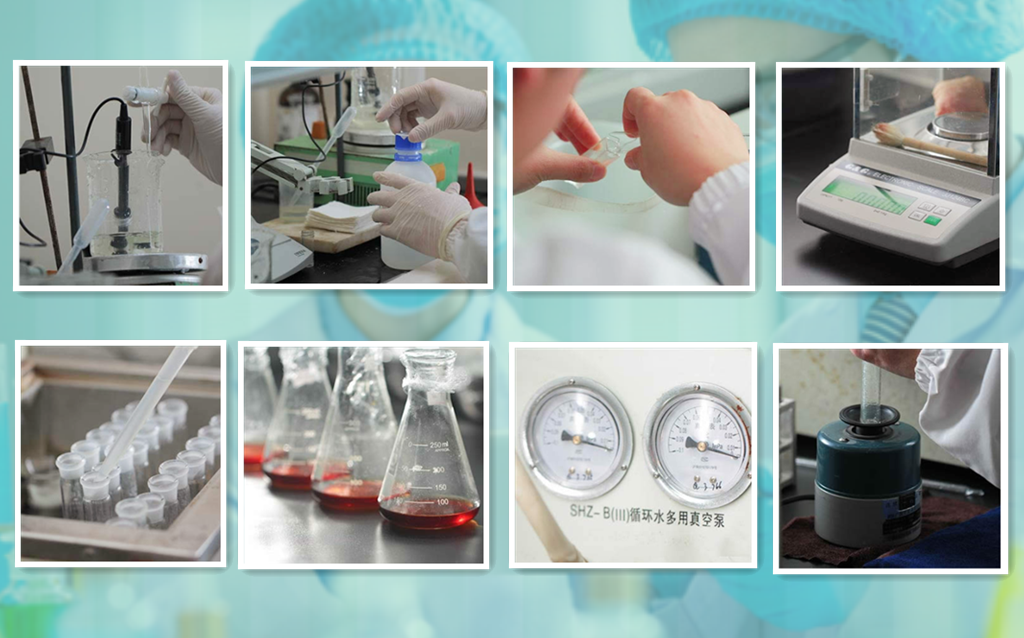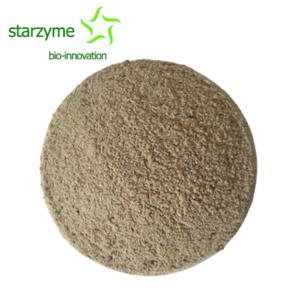Mannanase Enzyme

- Starzyme
- China LiaoNing
- Within Two weeks afterreceivedthe order
- 150 Tons Permonth
1. Appearance: pale white powder with less than 8% of water content.
2. Activity: 5000 U/g
3. The β-mannanase can decompose mannans in soybean, cereals and their by-products, destroy cell walls, reduce the viscosity of digestive chymes, and help the nutrients to fully contact digestive enzymes.
4. The β-mannanase can also increase the activity of endogenous digestive enzymes such as amylase, trypsin and lipase, improve intestinal microflora and the integrity of intestinal mucosa, increase the feed utilization, promote growth and reduce the environmental pollution.
Mannase is a kind of semicellulase prepared by deep liquid fermentation of fungus. It can degrade the anti-nutritional factors such as non-starch polysaccharides (NSP) in feed, reduce the chyme viscosity, improve the absorption of nutrients, feed conversion and the growth of livestock and poultry.
Features:
1. Appearance: pale white powder with less than 8% of water content.
2. Activity: 5000 U/g
3. Temperature: 30-45°C
4. pH: 3-9
Definition of the unit of the enzyme activity: One unit (U) is defined as the amount of enzyme needed to hydrolyze 3 mg/ml of mannans (Sigma G0753) to release 1 μmol of reduced sugar based on mannose measured as the absorbance value in DNS chromogenic reaction in acetic acid – sodium acetate buffer (0.1 mol/L, pH 5.5) at 37°C in 1 min (total reaction time is 30 min).
Applications:
1. In papermaking, the synergistic hydrolysis by β-mannanase and xylanase improves pulp bleaching and deinking, and thus improves the paper quality.
2. In textile industry, β-mannanase can effectively remove the adhesive excess dyes on the product, reduce energy consumption and environmental pollution.
3. In food industry, β-mannanase can reduce the accumulation of nutrients in the intestinal tract, improve digestion and absorption of nutrients, and enhance immunity.
4. In feed industry, β-mannanase can decompose mannans in soybean, cereals and their by-products, destroy cell walls, reduce the viscosity of digestive chymes, and help the nutrients to fully contact digestive enzymes. It can also increase the activity of endogenous digestive enzymes such as amylase, trypsin and lipase, improve intestinal microflora and the integrity of intestinal mucosa, increase the feed utilization, promote growth and reduce the environmental pollution.
(1)For soybean meal based diets of laying chickens, geese, growing pigs, and ruminants: 5-6 g/ton.
(2)For soybean meal based diets of broilers, chicklings, ducks, piglets, and aquatic animals: 6-10 g/ton.
(3)For miscellaneous meal based diets of laying chickens, geese, growing pigs, and ruminants: 6-10 g/ton.
(4)For miscellaneous meal based diets of broilers, chicklings, ducks, piglets, and aquatic animals: 6-10 g/ton.
Specification: 20 kg/bag
Storage:
Store in dry and cool (below 25°C) area with ventilation. During transportation, avoid direct exposure to strong sunlight, rain and moisture. The enzymes will lose activity at high temperature or under strong sunlight. The enzyme activity can be maintained up to 90% for 6 months when stored at room temperature.

Analysis on the current pain points of the industry
1. False mark of enzyme activity
The product is marked with 100,000 enzyme activities, and the actual enzyme activity is 60,000, resulting in incomplete hydrolysis and indirectly increasing the cost of enzymes.
2. Product is unstable
Lack of enzyme protection technology and quality control, unstable enzyme activity, and differences in product specifications for each batch, resulting in product quality fluctuations.
3. Long production cycle
No enzymatic hydrolysis experience and enzyme compounding technology increase labor cost and R&D cycle, which indirectly affects the production schedule.
For us, our major is to solve these pain points
1. The enzyme activity can be customized, providing different enzyme activity products and solutions
2. Stable enzyme activity, unique enzyme activity protection technology to reduce fluctuations in production quality
3. Enzyme activity is not false, strict quality control links, third-party testing to reduce enzyme costs
Quality control strength
6 key control point inspections, escorting the whole process of quality, using extraction, membrane separation, vacuum freeze-drying, spray drying and enzyme activity protection technologies to produce products that fully meet the requirements of global customers.

Production capacity
Eight automatic primary fermentation cylinders (60 m³),
2 pure culture tanks (10 m³), 2 pure culture tanks (5 m³),
4 pure culture tank (4 m³), 2 pure culture tanks (1 m³),
4 pure culture tanks (0.3 m³), 1 large air compressors,
1 spray/drying tower (1 ton/h),
4 air drying and fluidized bed drying equipment
1 production line of ultra concentrate liquid enzyme.
The annual production capacity of the Starzyme is more than 20,000 tons of liquid, powd

Thank you for your browsing, as a professional manufacturer of enzyme preparations and micro-ecological preparations, we are also very willing to help you . If you want to know the targeted solution, please leave a message in the message window below, we will assign a professional product consultant to contact you.












